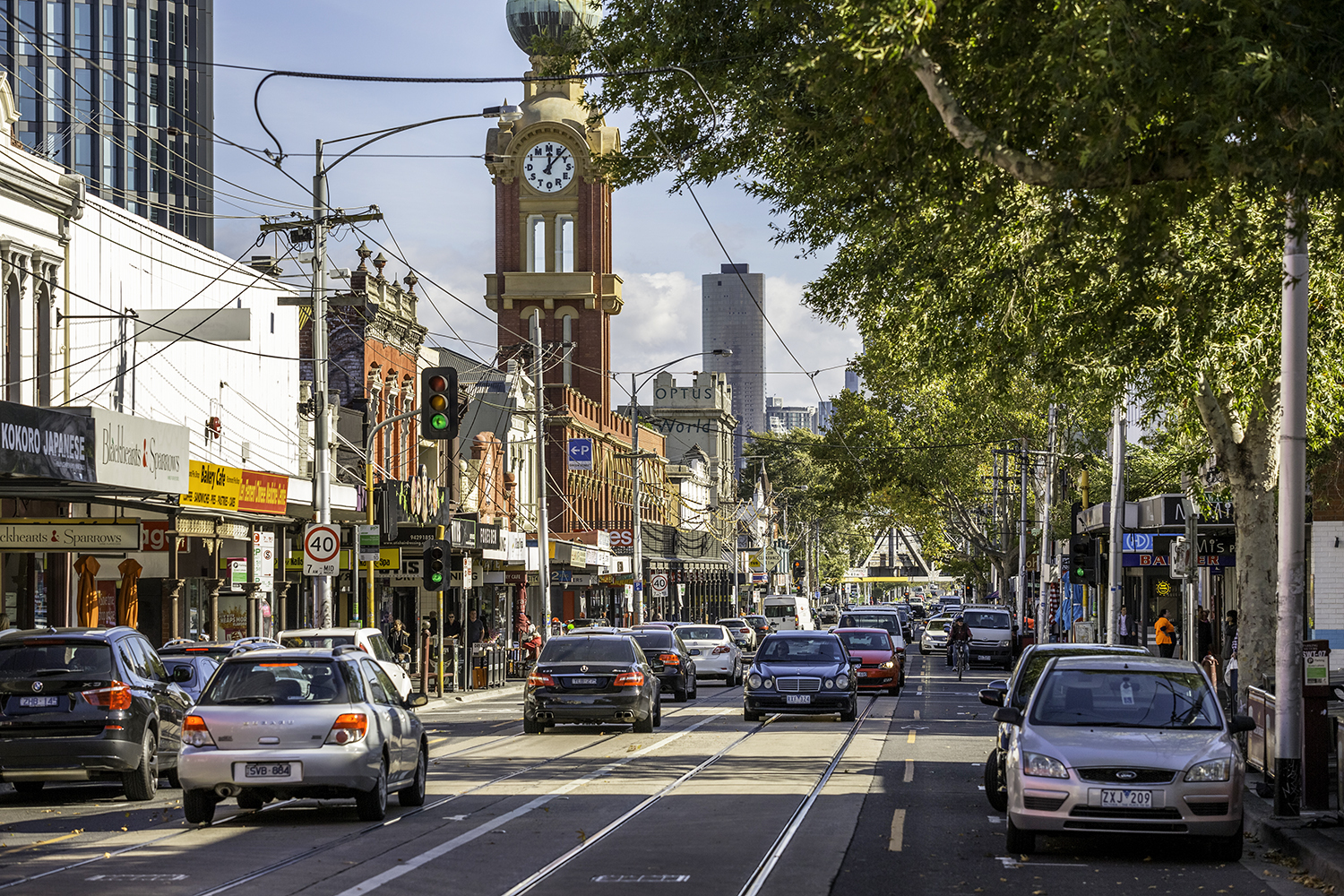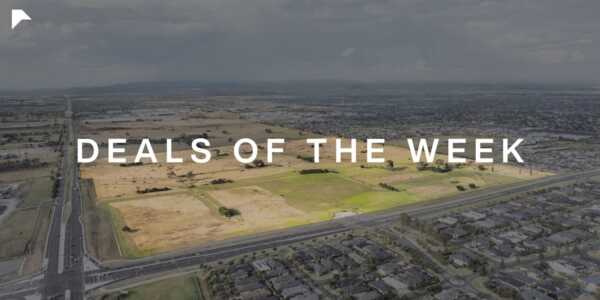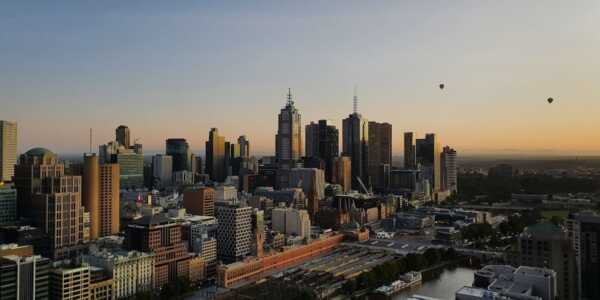Melbourne’s shopping strips have demonstrated their resilience throughout the biggest crisis the city has faced in decades.
Working from home and a sudden surge in demand for takeaway and delivery food services has helped support activity in Melbourne strips throughout multiple lockdowns during the COVID period, according to Fitzroys’ 2021 edition of Walk the Strip.
“The COVID period reinforced the role of the iconic neighbourhood strips as a place for Melburnians to connect with their local communities while the city endured multiple lockdown periods,” Fitzroys Director, David Bourke said.
Among the findings of the report were:
- Vacancies increased on average by 2.6% across nearly 35 of Melbourne’s major shopping strips (from 7.7% heading into COVID to 10.3% currently), with a broad variation of performances- Food and beverage was by far the best-performing sector
- Landlords have become more willing to meet the market on lease terms
- Click and collect and take away delivery grew during the COVID lockdown
- Supermarket-anchored strips were solid
- Exiting tenants looking to upgrade their position
“Melburnians love their local villages. They have reinforced their position as the heartbeat of their local communities over the past 12 months,” Bourke said.
“During COVID – particularly during periods of localised travel restrictions – the shopping strip became something more than a place to run errands and do the shopping. They were the place to go to get a coffee, to meet friends for a walk, or to break up the day while we were working from home,” Bourke said.
Fitzroys Associate Director – Leasing, James Lockwood, said retail strips continue to be honest reflection of the retail landscape.
“This is another chapter in the ongoing stories of Melbourne’s shopping strips,” Lockwood said.
“The nature of property ownership throughout the strips means they reflect where retail and its different forms are at a certain point in time, more so than shopping centres. Shopping strips have much more scope to develop their own character and personality. They reflect their demographic and their communities, and people see their communities in their shopping strips.
“Shopping strip tenancies aren’t beholden to the restraints of shopping centres, which can have requirements for tenancy mixes, marketing and fit-outs, and which are far less agile in being able to response to social and economic changes. Individual spaces and tenants along shopping strips can be more explorative in their store fit-out, product display and experiential aspects, and they can promote themselves in their own ways.”
Lockwood said multiple owners throughout a shopping strip means rents and lease terms can be more responsive to a changing environment.
“A lead-in of six to 12 months before COVID of informing property owners about changes in the market laid the groundwork for changing expectations. Well-informed landlords could quickly adjust to new market norms, and secure lease renewals and new retailers seeking a presence in these resilient strip shopping centres.
“Landlords mostly embraced the upside of meeting the market and offering incentives and flexible terms as a means of enticing tenants, whether they be shorter periods with options, greater rent-free periods, or a ‘COVID Clause’ that has quickly become an expected component of any lease.”
Tenants have used the conditions to move within strips to secure more prime positions, or to take up larger spaces, or expand into adjoining properties.
For many landlords, the drive to secure or retain a tenant has become greater than the drive to try and obtain a benchmark rental rate.
The best example of this may be Chapel Street, South Yarra, which is beginning to see a new cycle of leasing and a decrease in vacancies, from 20.4% heading into COVID down to 18.7%. Fitzroys’ Lewis Waddell has secured a string of new deals to specialty retailers looking to take advantage of the strip’s recalibration of rents. Joe Bananas, which has boutiques in Sydney and New York, has chosen Chapel Street as the location for its Melbourne debut and taken space up at 583 Chapel Street.
Multiple tenants have made a shift from nearby to Chapel Street or within the strip in a sign that landlords are meeting the market and creating opportunities for tenants. National menswear tenant M.J. Bale is relocating from nearby to a larger store at 558 Chapel Street with a more prominent shopfront, taking advantage of competitive rents in the process. Close by, fashion accessories retailer Trollbeads has moved from their shopping centre tenancy to 540 Chapel Street. They both follow fashion label Maatsuyker’s recent move from Greville Street to 574 Chapel Street.
On the other site of the street, Thurston and Howell are relocating within the strip closer towards the Toorak Road, to 495 Chapel Street.
Waddell said rental levels in some parts of Chapel Street, South Yarra had decreased to circa $500 to $600 per sqm net, and incentives increased up to 25% in some cases, although typically they are at around 10% to 15%.
“South Yarra still has the strong fundamentals of strong, established catchment in an affluent area, an ongoing development pipeline and now, affordable rentals and strong incentive levels - this is very attractive for tenants.”
Food and beverage leads take-up
While a reduction in the proportion of specialty and service retailers contributed to the empty stores, the food and beverage sector increased its presence across the strips, growing in 64% of the precincts, by far the best performing sector. Specialty retail, which includes fashion, homewares, and other discretionary shopping, increased in just 36% of strips, and service retail – hair and beauty salons, gyms, and medical – in 27%.
Lockwood said activity has been driven by the COVID-enforced phenomenon that saw operators looking to move into smaller spaces with kitchen infrastructure, in what was the most instant and obvious change in leasing along shopping strips in response to the pandemic.
“Hospitality operators have dominated retail leasing enquiry throughout Melbourne’s shopping strips since the outbreak of COVID.
“This began as a way for tenants to take advantage of opportunities to quickly expand and establish themselves in new markets as demand surged for takeaway and delivery while Melburnians remained locked down.
“Properties with kitchen infrastructure already in place remain in huge demand. These are still leasing quickly as tenants don’t have to plan and put a new kitchen fit-out in place themselves, saving them time and money, and making funding more straightforward in a climate in which businesses need to be leaner and faster.”
Glenferrie Road, Hawthorn was a particular beneficiary of the trend, and saw a Melbourne-high 7.9% increase in food and beverage operators over the past 12 months. Local favourites from across Melbourne chose the strip for expansion – The Cookie Box, sandwich specialists Saul’s, and smoothies and superfood slingers Green Cup among them, while 99 Pancakes made its debut in the strip, following Tex-Mex giant Taco Bell just ahead of COVID..
Retail strip properties attract rents from around $50,000 to $75,000 per annum, which is an acceptable price point for tenants who have generally become more risk averse.
Recently refurbished spaces are proving popular compared to properties that have been untouched by landlords for 10 to 20 years.
“These space present fast and cost-effective COVID-proof opportunities to remain active, or to expand into new locations and markets as pick-up and delivery services are able to continue operating during lockdown or periods of uncertainty.”
“The most recent lockdown period has given Melburnians a sense that may still be uncertain periods in which these types of spaces can not just see a business through, but also give them an edge over competitors.”
The trend became quickly apparent from the time Victoria first declared a State of Emergency in March of 2020. Some 48% of leases struck by Fitzroys between then and the midway point of the year were to food and beverage operators, a figure that rose slightly into the early part of this year to 50%. That figure is well above the shopping strip average of food and beverage retailers, currently at 28.4% Melbourne-wide.
Specialty food operators were another positive news story to come out of the period as Melburnians sought quality food alternatives in lieu of being able to dine out. Often these opened in strips in affluent catchments - Victor Churchill committed to a space within the Alara development in High Street, Armadale; Leaf has traded strongly from Glenferrie Road, Hawthorn; and Stocked Food Store and Baker Bleu both expanded into Toorak Village.
Vacancies vary
Church Street, Brighton retained its status as arguably Melbourne’s – and perhaps Australia’s – most highly-regarded shopping strip. Its vacancy rate is just 0.7% - the only available shop is an assignment of lease. New entrants including Assembly Label, Store Chance and Oroton took the proportion of specialty tenants to nearly 58% – some 6% higher than it was three years ago, and the highest fashion and discretionary retail proportion of any strip in Melbourne.
Bourke said the broadly high-income, established catchment willing and able to spend on discretionary retail, combined with the strip’s constrained supply create ideal conditions for a well-balanced tenancy mix and consistently low vacancies. The balance of the strip is accounted for by quality food and beverage operators, the Palace Cinemas complex at the Dendy, Coles and Woolworths, major banks, and a service retail presence that caters to the everyday needs of locals.
Puckle Street, Moonee Ponds is returning to its glory days as one of Melbourne’s most prominent shopping strips, posting a low 4.6% vacancy rate that is nearly half of what it was in 2019.
“Puckle Street is at the heart of the suburb’s development boom and regeneration, as well as the evolution of its retail hospitality offering that is attracting a new generation to the suburb,” according to Fitzroys Associate, Ervin Niyaz, who has negotiated six new leases in Puckle Street in 2021.
Centre Road, Bentleigh meanwhile, is one of the best examples of growing supermarket sales driving custom to shopping strips during the lockdowns, and maintaining some trading momentum throughout the 2020. The strip is anchored by Woolworths, Coles and Aldi. It has also been a beneficiary of level crossing removal, which has freed up traffic flow through the strip. Its vacancy rate has come down to 5.3%.
Smith Street, Collingwood (5.1%) was a beneficiary of the trend towards working from home and flexible working arrangements that has spurred office activity across accessible locations in Melbourne’s inner suburbs that also have a quality hospitality and lifestyle at their doorstep. Swan Street, Richmond (6.4%) also retained low vacancy.
Glenferrie Road, Hawthorn managed to stay steady throughout the period. While vacancies lifted around 5% to double digits in the 12 months heading into COVID, the strip managed to weather the absence of Swinburne University students with a hefty take-up of food and beverage operators, and holds healthy prospects given the suburb’s growing office market and the pending return of in-person classes.
Toorak Village saw one of the best improvements in vacancies (down 2.6% to 5.0%) with an affluent and white collar workforce that stayed at home supporting the strip. Similarly, Malvern Road, Toorak – better known as Hawksburn Village - was also low (5.3%), and below its longer-term average.
Despite being one of the better performers heading into the COVID period, Acland Street, St Kilda was impacted by COVID-enforced travel restrictions most deeply. The backpacker and tourist playground saw vacancies jump from 6.4% to 14.6%. It was among the 73% of strips that saw an increase in vacancies – however, these varied from negligible amounts in strips with healthy vacancy rates (such as Bay Street, Brighton, which lifted by less than 1.0%) to the more notable (the west end of Bridge Road, Richmond lifted 9.3%).
Lygon Street, Carlton was a high-profile casualty of Melburnians’ love of going out for coffee, dining, and generally all things hospitality. Its vacancy rate had actually come down heading into the COVID period, but lifted to 20.0%.
“It is important to also look a little deeper into the statistics. Lygon Street, Carlton has an elevated vacancy over the last 12 months, but the prime section of the strip has continued to trade strongly,” Lockwood said, noting that its prime section, between Victoria and Grattan Street, has a very high food and beverage component of about 65% and a vacancy of 15.3%, while further along up to Elgin Street is much more specialty-oriented and has a much higher 23.9% vacancy.
Bridge Road, Richmond has experienced a high-profile identity crisis since its heyday as a factory outlet hub, and is now effectively made up of three quite distinct section. The prime section, east of Church Street, is a thriving food hub with a broad range of dining options, cafés and bars, while the transitioning city end, beginning at Punt Road, posted the highest vacancy rate of all strips at 24.5%. Meanwhile, Hampton Street – also among Melbourne longer shopping strips– has a vacancy rate of just on 10.0% and with very consistent occupancy rate throughout.
View the full ‘Walk the Strip Report’ here
Report & Image Courtesy of Fitzroys Agency









